
The guide to the different types of sailing regattas
Sailing competitions are sport races in many various formats. The yachting community calls them regattas (Italian "regata" derived from "riga" meaning "row line", "starting line").
Normally they are initiated by national or international federations of individual classes, yacht clubs or private organizers. As many competitions are held each year, they are arranged in calendars for each class of regattas separately, as well as consolidated ones for the entire season.
The general racing rules are defined by the International Racing Rules of Sailing (RRS) as well as the rules for each individual class. In the case of a rules violation during a race, one or several competitors lodge a protest citing a clause of the Rules, with the referees deciding who is the guilty one and inflicting penalties. Apart from that, the referees are entitled to set the penalty right away, such as for a false start.
According to World Sailing (formerly ISAF) sailing competitions are classified in terms of yacht class, format, site of regatta, distance, type of crew membership and level of skills.
In this post we will take a closer look at the two most important classifications of regattas: by format and professional level of participants.
Formats of regattas
In terms of formats, all sailing events can be conveniently classified into match racing, fleet racing and handicap racing.
Match racing
Match races are duel ones, which means that only two teams compete in each preliminary round. Only same-type yachts/catamarans take part in those races, with the weight of the crew being restricted to tight specifications.
Each race may have only one winner who gets one score point, while the loser gets zero points. Thus, each participant must race against all the others. As a result of the matches, a table is compiled where the results are ranked in terms of the number of victories for each team. The world’s most famous match races are America’s Cup and World Match Racing Tour.
America’s Cup is the oldest sport competition in the world. Its history began back in 1851, 20 years before the first World Soccer Cup was held and 45 years prior to the first Olympic Games.
The first race, which was dubbed “The 100 Guineas Cup,” was a challenge of one of the world’s most prestigious Royal yacht clubs, Yacht Squadron, to the “America” schooner. The latter was presented at the World Industrial Exposition from the USA as the country’s fastest craft. The challenge took place around the Isle of Wight and resulted in the American triumph. Since then the Cup has been played in series of match races where one participant defends the previous season winner’s yacht club from new challengers.
The qualifiers for the Cup take place at Louis Vuitton Cup (from 2017 - Louis Vuitton America’s Cup Challenger Playoffs). In 2017, AC50 hydrofoil catamarans took part in the Cup. Emirates Team New Zealand (Royal New Zealand Yacht Squadron yacht club) beat the trophy-holder Oracle Team USA (Golden Gate Yacht Club) by a score of 7:1. The competition took place in the waters around the Islands of Bermuda.
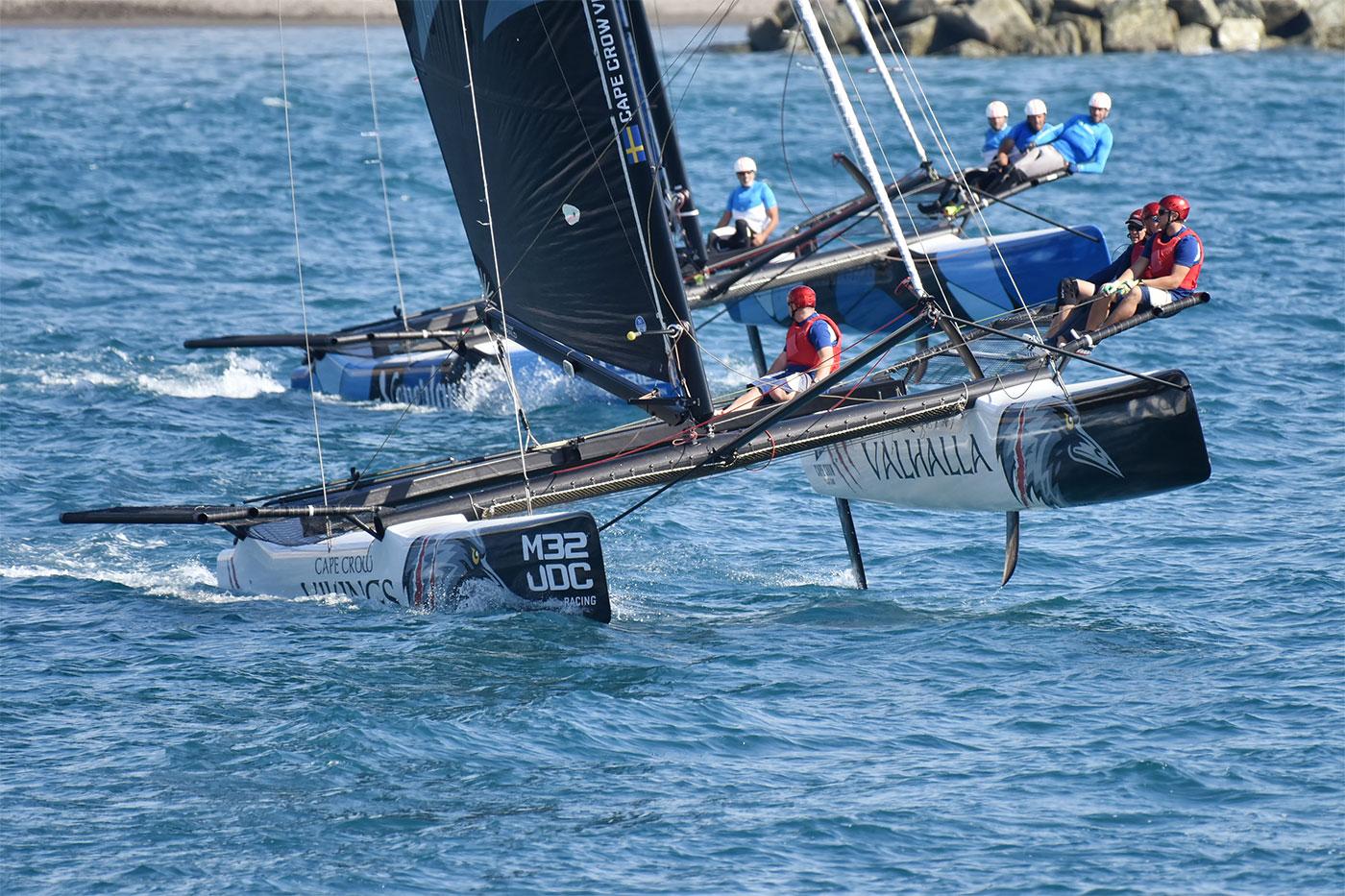
America’s Cup / Shutterstock
Fleet / One-design races
Competitions on the same-type boats are called one design racing. This means that the competitions are restricted to yachts of the same design and rigging to the rules set by the association of that class. Nevertheless, many classes have a possibility to do a little fine-tuning. For example, in the Olympic 470 and 49er classes you can pull the shrouds up, which impacts the flexibility of the mast, or adjust the sails for weather conditions.
This format is typical of the Olympic competitions where the level playing field is a prerequisite for the fair play and getting the most transparent results.
Oftentimes at professional and amateur regattas the same-class yachts are united into individual divisions, which perform in separate heats.
Examples of regattas in the one-design/fleet races are The 2018 Sailing World Championships, The 2019 J/70 European Championship, Melges 32 World League, Star Sailing League.
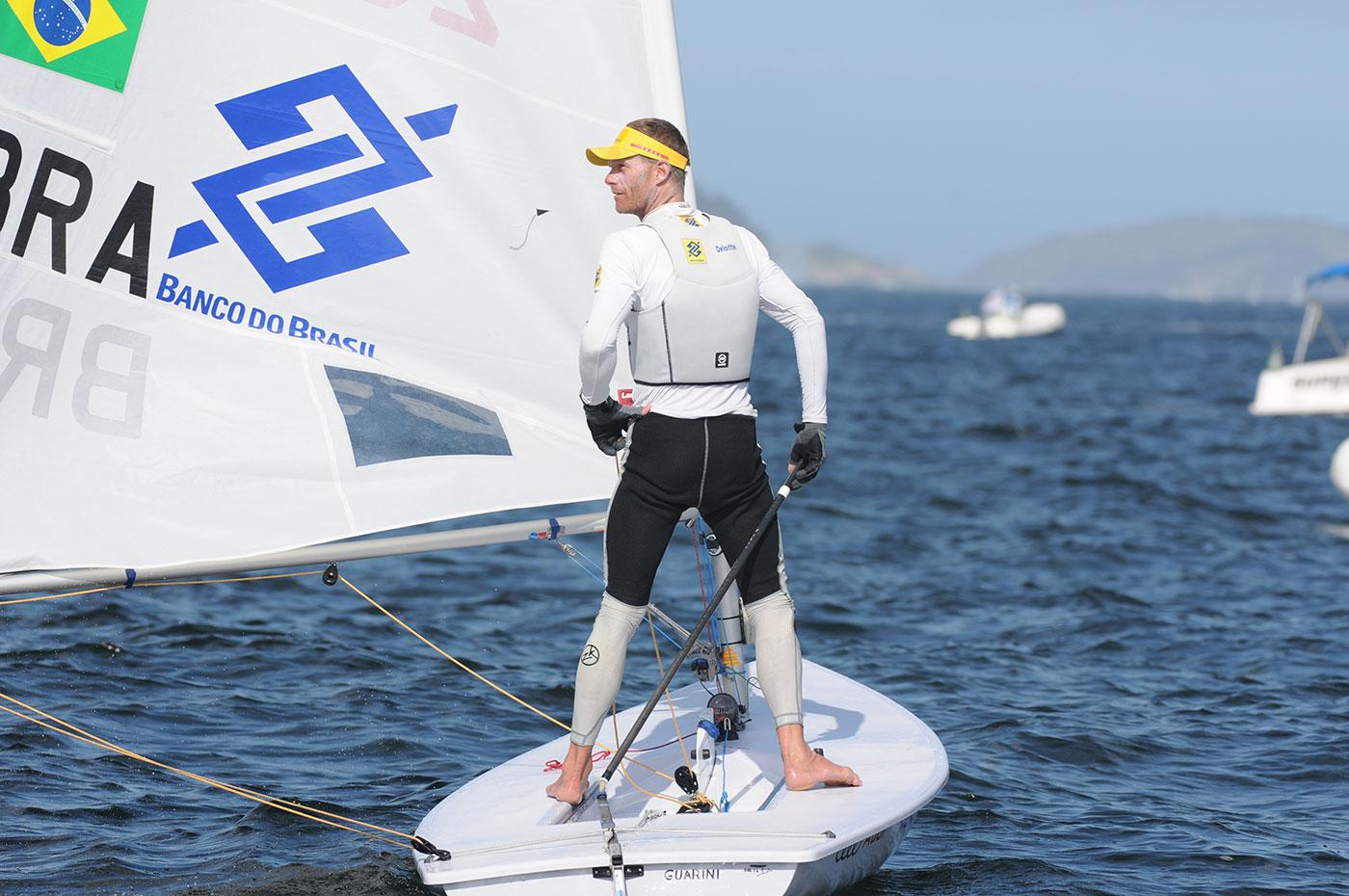
Olympic 49er class / Shutterstock
Handicap races are competitions among various yachts with adjusted times
Fleet races can also be held among yachts belonging to different classes. However, the organizers are then faced with the challenge of how to level the playing field. There are special measurement and ranking systems in place to that end.
Levels of regattas
In terms of levels or status, all sailing events can be conveniently classified into professional and professional-amateur ones. The first group includes Olympic events.
Olympic events
The Summer OIympic Games traditionally host sailing events. They had their debut in Paris in 1900. Up until 1988 mixed gender teams took part in the competition. The Seoul Games first introduced 470 and Finn classes which had separate scores for men and women.
Today World Sailing attributes the following events to Olympic ones:
- 470 is a light-weight gliding centerboard dinghy with a trapeze and a spinnaker called so due to its hull length – 470 cm. This class was first included in the Olympic events back in 1976 on Lake Ontario between the USA and Canada.
- 49er is a skiff class called so because of the hull length of 490 cm. It is equipped with retractable wings, two trapezes, a gennaker, a self-extendable bowsprit and a demountable mast. It debuted during the Sydney Olympic Games in 2000.
- 49erFX differs from the classic version only in having a smaller spar and smaller sails and is meant for female crews.
- Finn is a single-handed sport dinghy with a single mast and a sail, as well as the possibility of fine-tuning. This class was designed exclusively for the 1952 Helsinki Olympic Games and is used for male races, as the boat is quite heavy and requires a high level of athleticism.
- RS:X is the sole windsurfing discipline among yachting participants of Olympic Games. The sail was designed during the NeilPryde RS series racing sails project which gave its name to the discipline.
- Laser/ILCA is a light high-maneuver dinghy with one sail and one mast which can easily be transported on a car roof. It was first presented at the World Championships in the Islands of Bermuda in 1974 and Olympic Games in Atlanta 1996.
- Laser Radial is different from the standard Laser in terms of just a smaller sail designed for women participating in the Games.
- Nacra 17 is the only monotype catamaran in the Olympic Games program made specifically for coastal and inshore sailing areas. The special feature of this class is a mixed-gender crew made up of two persons.
The next Olympic Games taking place in Japan in 2020 will have the same selection of events. Thus, ten sets of medals will be awarded – five for men, four for women and one for mixed event. Each country can be represented by not more than 15 athletes and have only one crew in each event. Overall, 350 athletes from all over the world are taking part.
To get accreditation at the Olympic Games the athletes should prove their competence at the qualifiers. Thus, around 40 percent of the spots for the upcoming 2020 Olympic Games were granted at the World Sailing Championships which took place in Denmark in 2018. The qualifiers will also take place at the Asian Games 2018, Pan-American Games 2018, World Championships 2019 for individual classes and at the continental qualifying regattas.
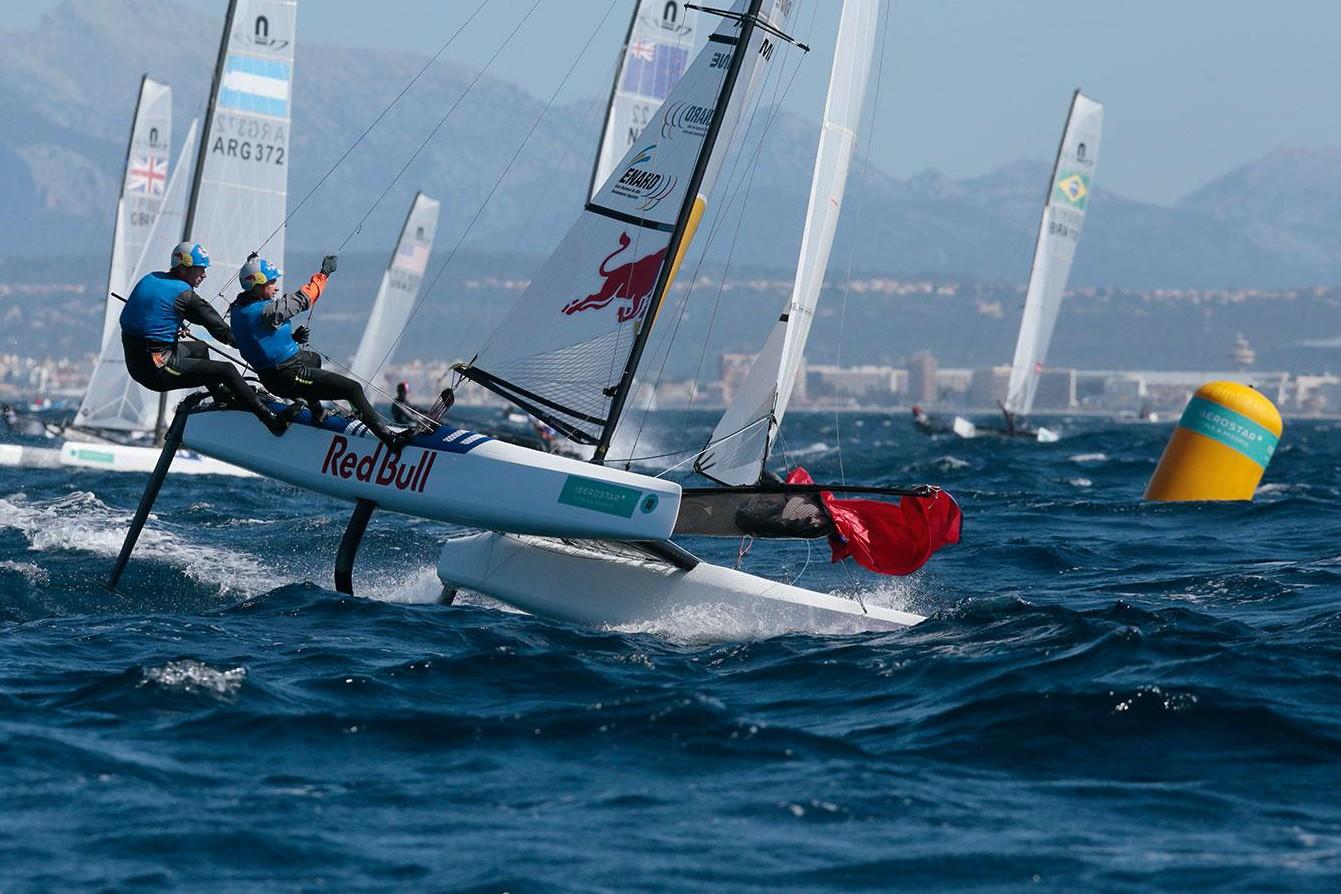
Nacra 17 is Olympic sailing catamaran / Shutterstock
Individual class competitions for professional crews
The sailing federations for individual racing classes and regions of each country hold their own national events whose winners represent the country at international competitions, for example at the European Championships. The highest rank here is the World Championship in one’s class. The prize fund can be not only in the form of medals and trophies but also a category upgrading (candidate master of sailing, master of sailing, honored master of sailing) and the draw of spots for the next Olympic Games.
Examples of prestigious non-Olympic professional regattas:
- America’s Cup is considered the pinnacle of sailing mastery of modern times.
- Volvo Ocean Race is a round-the-world race on the most innovative vessels.
- Extreme Sailing Series is a regatta with the shortest distance.
- Vendee Globe is the only round-the-world non-stop single-handed yacht race.
- Panerai Classic Yachts Challenge is a regatta featuring classic wooden yachts.
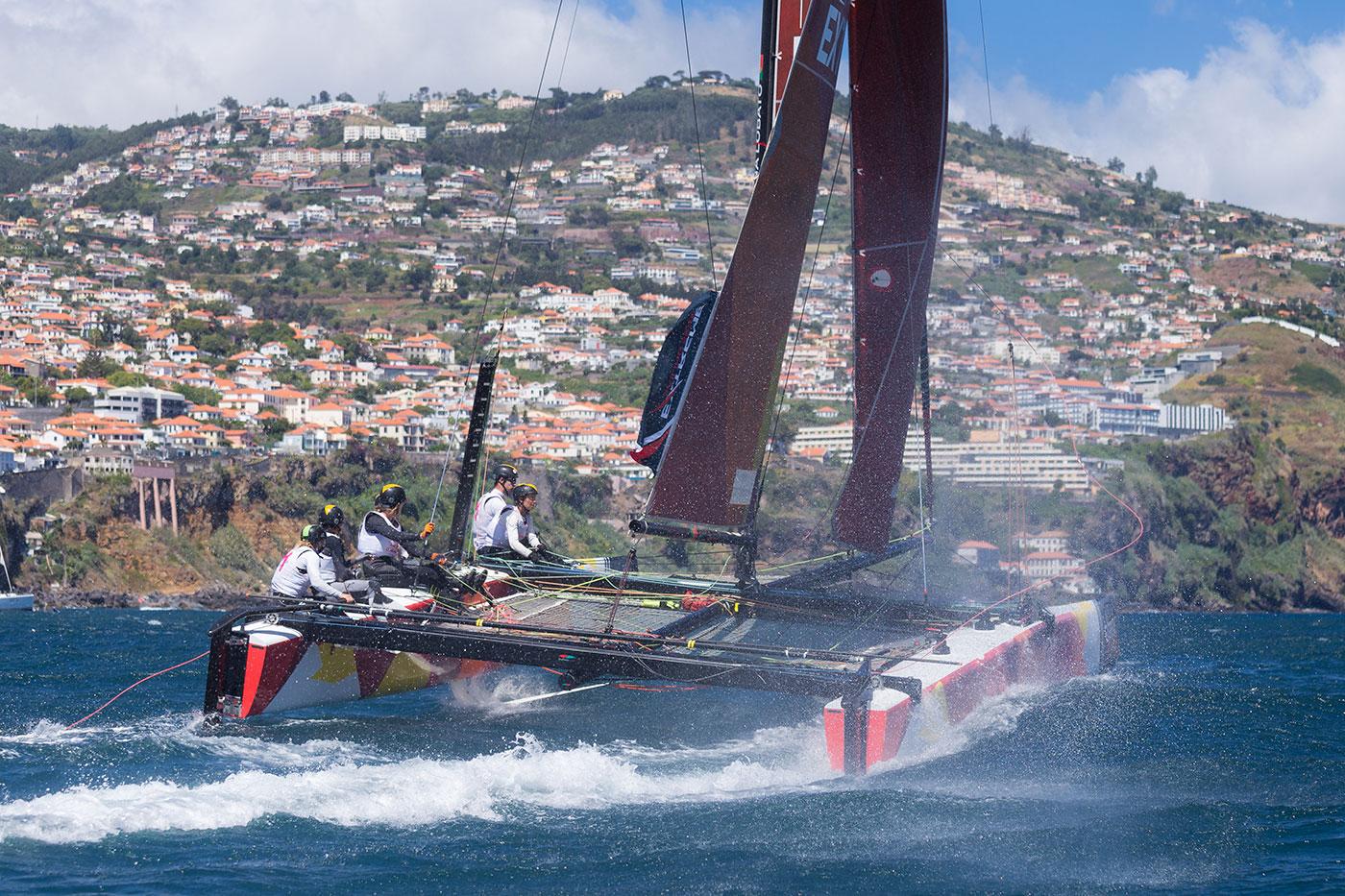
America's Cup / Shutterstock
Professional-amateur events
This category includes all the largest international regattas which not only give the possibility for non-professional athletes to take part in the competitions but also allow less experienced yachtsmen and amateurs with no master of sailing or Olympic Games participant titles to become part of a racing crew.
The following regattas can be attributed to this group:
- RORC Fastnet Race is a 608-mile offshore regatta in tough weather conditions.
- Rolex Sydney Hobart Yacht Race is the 630-mile race considered one of the most difficult regattas in the world.
- Copa del Rey —The King’s Cup is considered one of the most prestigious regattas in Spain.
- Cowes Week — one of the largest regattas in the world.
- Rolex Middle Sea Race is a 600-mile non-stop race in the Mediterranean Sea sailing around the active volcanoes Stromboli and Etna.
- Les Voiles de Saint-Tropez is a regatta featuring classic wooden yachts and ultramodern racing bolides.
- Rolex Giraglia Cup — this regatta includes a night race and a fixed-route 250-mile race around the island of Giraglia in the Mediterranean.
- RC44 World Championship — RC44 class fleet races.
These regattas encompass many divisions at the same time, both monofleet and handicap ones, while the events can include up to 50 starts a day. Regattas take place under financial, technical and information support of sponsors and partners, while the prize fund may include not only luxury trophies and medals awarded to the winners in each division and overall standing but also large sums of money and valuable gifts.
Apart from that, it is common that large-scale regattas host the events of world series of individual classes, for example the “flying” GC32 catamarans will host an event of GC32 Racing Tour 2019 under Copa del Rey regatta. So, international collaborations are gaining momentum in today’s sailing community, which makes this sport more spectacular for the general public.
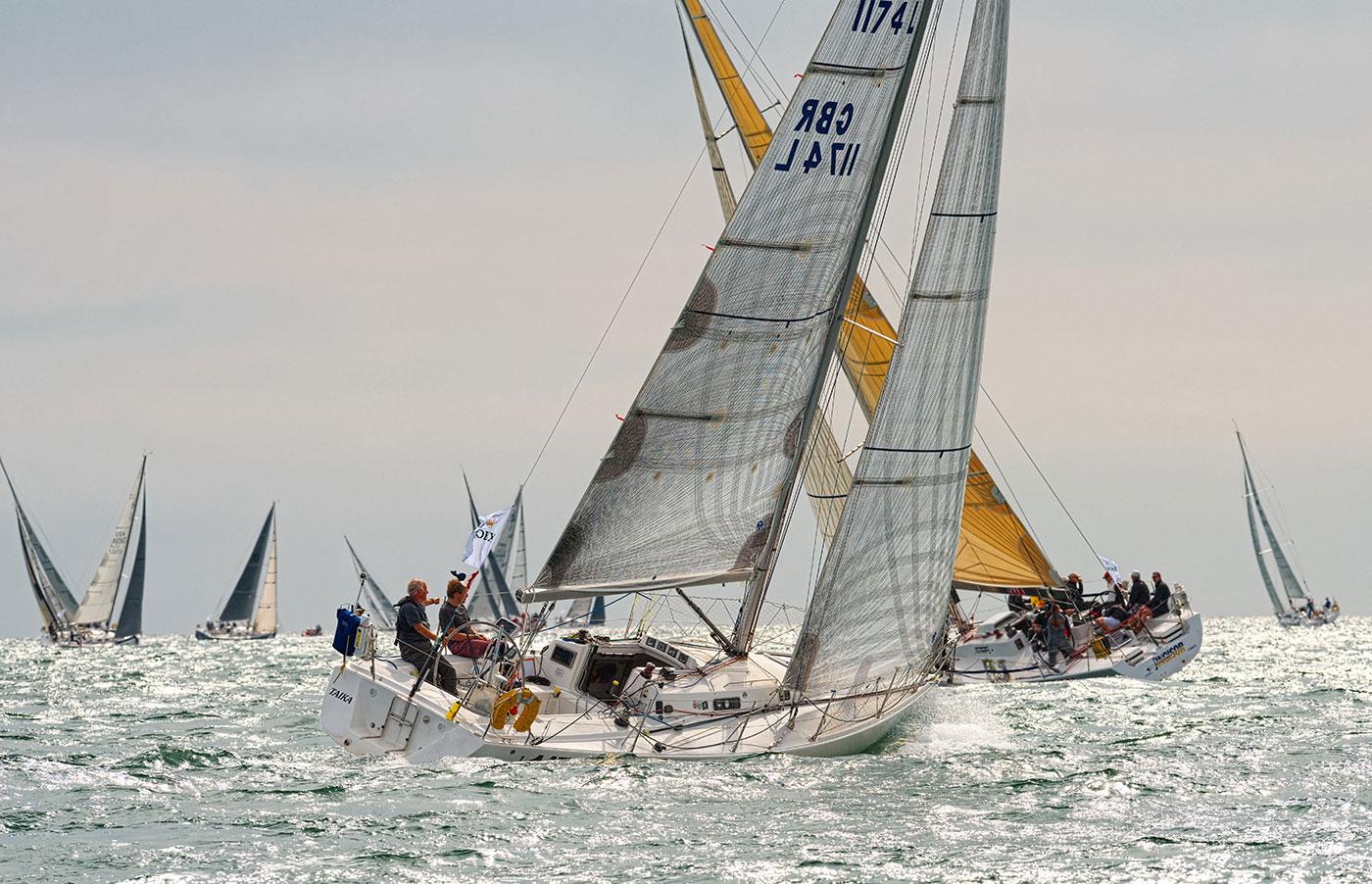
Rolex Fastnet Race / Shutterstock
Other types of regattas
According to the same World Sailing (formerly ISAF), there are several other types of sailing competitions in terms of:
- yacht class: dinghies, keel-boats, multihulls, cruiser yachts, ice class
- site of regatta: national (in the United States, France, Russia...) and international
- distance: short, coastal/inshore, offshore, trans-oceanic, round-the-world
- crew membership: single-handed, double-handed, paired or full
These types of regattas are less important than the two that we have analyzed above or are usually combined with them, that is, one regatta is classified by several principles at once.
We'll deal with these types later by updating this article, so bookmark it to come back.
This post was originally published in the Windy.app blog on July 22, 2019.
Text: Windy.app team
Cover photo: Daniel Stenholm / Unsplash
You will also find useful
The guide to rating systems in sail racing
How to get first-time skipper experience and prepare yourself for sailing
Review of keelboats: types, sizes, history
Types and purposes of yachting boats: dinghies and catamarans
Latest News
Professional Weather App
Get a detailed online 10 day weather forecast, live worldwide wind map and local weather reports from the most accurate weather models.
Compare spot conditions, ask locals in the app chat, discover meteo lessons, and share your experience in our Windy.app Community.
Be sure with Windy.app.



